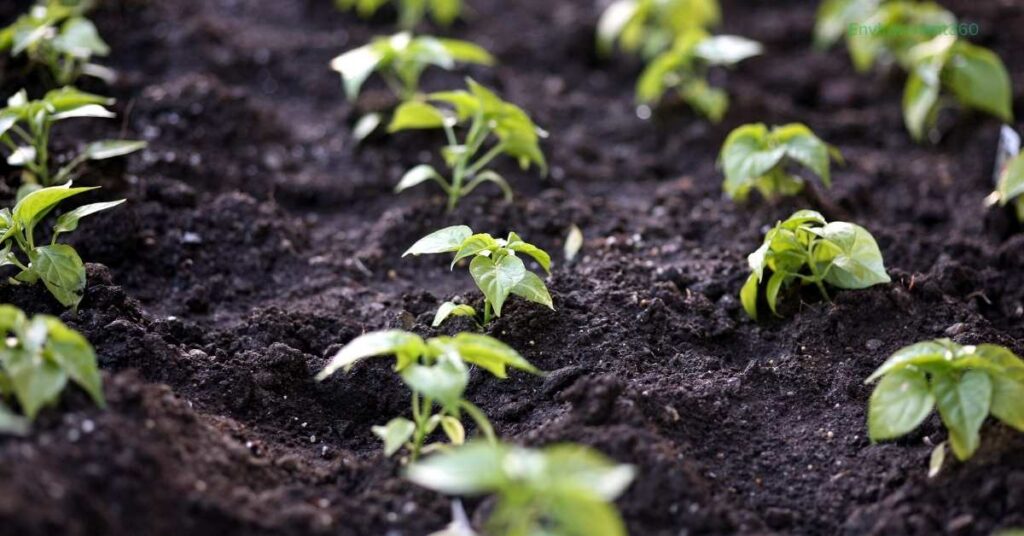The ground nut tree, scientifically known as Arachis hypogaea, is a member of the Fabaceae family, more commonly referred to as legumes. Though most people associate groundnuts, also known as peanuts, with the annual plant that grows low to the ground, there are some varieties of nut-producing trees that fall into the same family. These species play a vital role in ecosystems, agriculture, and human nutrition worldwide.
In this article, we will explore the ground nut tree’s environmental significance, its ecological contributions, uses, and the conservation challenges it faces.
What is the Ground Nut Tree?

Understanding the Ground Nut Plant Family
Before diving into the details about the ground nut tree, it is important to clarify the relationship between groundnuts (peanuts) and tree-based legumes. While the classic peanut plant is not technically a tree, the term “ground nut tree” can refer to perennial legume trees in the same family. These trees are often confused with the ground nut plant because of their similar nut production. The groundnut, however, comes from a plant that grows close to the ground rather than a tree.
The Traditional Groundnut Plant (Arachis hypogaea)
The plant that most people associate with groundnuts is a small herbaceous annual plant, Arachis hypogaea. Unlike most plants that develop fruits above ground, this unique species produces its seed pods below the soil’s surface, giving it the name “groundnut.” Though not a tree, it belongs to the legume family and is crucial in various agricultural and environmental systems due to its nitrogen-fixing abilities and its role as a protein-rich food source.
Tree Varieties in the Legume Family
Several other leguminous trees, such as the African ground nut tree (Macrotyloma geocarpum) and Tetracarpidium conophorum (African walnut), bear nuts similar to the common peanut. These tree varieties are widespread in various regions and have been cultivated for their seeds, which are used in food production, traditional medicine, and even fuel sources in some cases.
Ecological Importance of the Ground Nut Tree

Nitrogen Fixation and Soil Health
One of the most significant contributions of any leguminous plant is its role in nitrogen fixation. These, like their peanut counterparts, can enrich the soil by converting atmospheric nitrogen into forms that plants can absorb. They do this through a symbiotic relationship with nitrogen-fixing bacteria, particularly Rhizobium, that live in root nodules of the plant.
This process has numerous environmental benefits:
- Improved Soil Fertility: Ground nut trees reduce the need for artificial nitrogen fertilizers in farming systems. When planted as part of a crop rotation system, they replenish the nitrogen content in the soil, making it more fertile for future crops.
- Reduced Erosion: By improving the health and structure of the soil, it can reduce erosion, which is particularly important in regions prone to degradation from wind and water runoff.
Role in Agroforestry Systems
Ground nut trees play an essential role in agroforestry systems, where agricultural crops are integrated with trees to create more sustainable and resilient ecosystems. These systems provide several environmental benefits, including improved biodiversity, better water retention, and enhanced microclimates that help protect crops from extreme weather events.
Some benefits of ground nut trees in agroforestry include:
- Biodiversity: The ground nut tree supports a rich variety of plant and animal species by providing food and habitat. The diverse vegetation it encourages, including other leguminous plants, attracts beneficial insects, birds, and mammals, which help with pollination, seed dispersal, and pest control.
- Climate Regulation: Trees are known to regulate local climates by providing shade and reducing evaporation. Ground nut trees can create cooler microclimates, which is beneficial for companion crops, particularly in tropical and arid regions where water stress is common.
- Carbon Sequestration: Like other trees, it absorb carbon dioxide (CO2) from the atmosphere, helping to mitigate climate change. When cultivated over large areas, they can significantly contribute to carbon sequestration efforts.
Ground Nut Trees and Pollinators
Pollinators such as bees and butterflies play a crucial role in the reproductive cycle of many plants, including these. While peanuts and other groundnut plants rely more on self-pollination, certain tree species within the legume family benefit from the presence of pollinators to ensure higher yields and genetic diversity.
Ground nut trees attract a wide range of pollinators with their flowers, which are rich in nectar. This not only benefits the trees themselves but also supports the broader ecosystem by maintaining healthy pollinator populations. These insects are vital for the pollination of many food crops, making ground nut trees a valuable part of sustainable agriculture.
The Role of Ground Nut Trees in Sustainable Agriculture

Food Security and Nutrition
Ground nut trees contribute significantly to food security, particularly in developing regions where tree-based crops are a staple food source. The nuts they produce are high in protein, healthy fats, and essential nutrients, making them a critical part of many diets.
- Protein-Rich Nutrition: Groundnuts are one of the best plant-based sources of protein, providing essential amino acids that are often lacking in plant-based diets. This is particularly important in regions where animal protein is scarce or expensive.
- Essential Nutrients: Groundnut trees provide seeds rich in vitamin E, niacin, and folate. They are also a good source of dietary fiber, which is important for maintaining digestive health.
Drought Tolerance and Climate Resilience
Ground nut trees are often more drought-tolerant than many other crops, making them a valuable resource in areas prone to water scarcity. Their deep roots allow them to access water stored deeper in the soil, enabling them to survive and produce yields even during dry periods. This resilience makes them an important part of climate-adaptation strategies for agriculture, especially in regions that are increasingly affected by climate change.
Economic Benefits for Smallholder Farmers
In many parts of the world, smallholder farmers rely on tree crops such as ground nut trees for their livelihoods. These trees provide a source of income through the sale of their nuts, seeds, and other by-products. Additionally, because of their ability to enrich the soil, ground nut trees reduce the need for expensive chemical fertilizers, making farming more affordable and sustainable.
Farmers can also benefit from selling by-products of ground nut trees, such as leaves and branches, which can be used as animal fodder or fuel for cooking fires. This makes the tree an essential part of the rural economy in many regions, particularly in Africa and Asia.
Environmental Challenges Facing Ground Nut Trees

Habitat Destruction and Deforestation
Like many tree species, ground nut trees are under threat from habitat destruction caused by agricultural expansion, urbanization, and deforestation. As forests are cleared for farming or development, the ecosystems that support ground nut trees are destroyed, leading to declines in biodiversity and soil degradation.
In some regions, the conversion of forests to monoculture crops has reduced the availability of land for diverse agroforestry systems, which support ground nut trees and other essential plant species. This trend not only threatens the survival of ground nut trees but also undermines the broader environmental benefits they provide.
Climate Change Impacts
While ground nut trees are relatively drought-tolerant, extreme weather events linked to climate change—such as prolonged droughts, floods, and heatwaves—can have a detrimental impact on their health and productivity. In some regions, shifting rainfall patterns may make it more difficult for these trees to establish themselves, leading to reduced yields and a loss of biodiversity.
Climate change also affects the health of the ecosystems in which ground nut trees thrive. For example, changes in temperature and precipitation can alter the behavior of pollinators and other wildlife, disrupting the delicate balance of the ecosystem.
Pests and Diseases
Ground nut trees are vulnerable to a variety of pests and diseases, which can have significant economic and environmental impacts. In some regions, invasive species or fungal infections have decimated ground nut tree populations, leading to reduced yields and biodiversity loss.
To mitigate these risks, farmers and conservationists must implement integrated pest management strategies that minimize the use of harmful chemicals while preserving the health of the ecosystem.
Conservation and Sustainable Cultivation of Ground Nut Trees

Agroforestry as a Solution
One of the most effective ways to conserve ground nut trees and promote sustainable agriculture is through agroforestry practices. By integrating ground nut trees into agricultural systems alongside other crops, farmers can improve soil health, increase biodiversity, and enhance resilience to climate change.
Agroforestry systems also provide economic benefits to farmers, as they can diversify their sources of income by producing nuts, fruits, and other products from trees. This approach also reduces the need for chemical inputs, making farming more environmentally sustainable.
Protecting Natural Habitats
Conservation efforts must focus on protecting the natural habitats where ground nut trees thrive. This includes preventing deforestation, promoting reforestation, and restoring degraded ecosystems. Governments and non-governmental organizations (NGOs) can play a crucial role in supporting these efforts through policies and initiatives that encourage sustainable land use and forest conservation.
Seed Banks and Genetic Diversity
To ensure the long-term survival of ground nut trees, it is essential to preserve their genetic diversity. Seed banks play a crucial role in conserving the seeds of ground nut trees and other plant species, allowing for the reintroduction of these plants into areas where they have been lost.
By maintaining a diverse pool of seeds, researchers and farmers can select varieties that are more resilient to changing environmental conditions, such as drought, pests, or disease. This is particularly important in the context of climate change, as it ensures that future generations of ground nut trees can adapt to new challenges.
Sustainable Harvesting Practices
For farmers and communities that rely on ground nut trees for food and income, it is essential to implement sustainable harvesting practices. This includes avoiding overharvesting, which can deplete the tree’s resources and lead to its decline. Farmers should also be encouraged to use organic farming methods, which reduce the use of chemical fertilizers and pesticides that can harm the environment.
Conclusion
The ground nut tree, while less known than its peanut-producing cousin, plays a crucial role in the environment and sustainable agriculture. From nitrogen fixation and soil health improvement to its resilience in drought-prone areas, the ground nut tree offers numerous benefits to ecosystems and communities alike. By promoting its conservation, sustainable cultivation, and integration into agroforestry systems, we can harness the ecological and economic potential of this remarkable tree species for future generations.
Read More: Bergamot Flower: A Comprehensive Look into Its Ecological Role and Benefits

